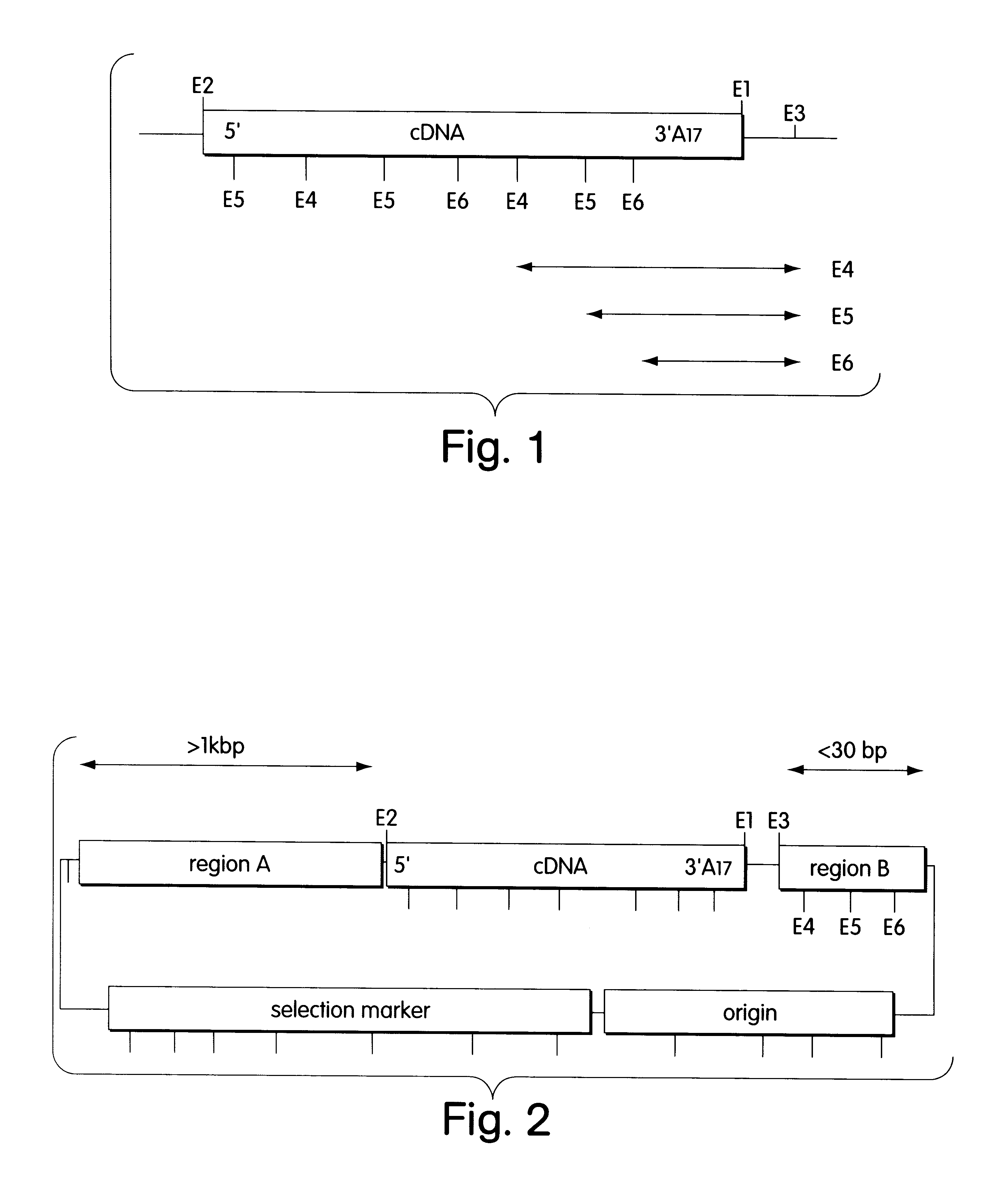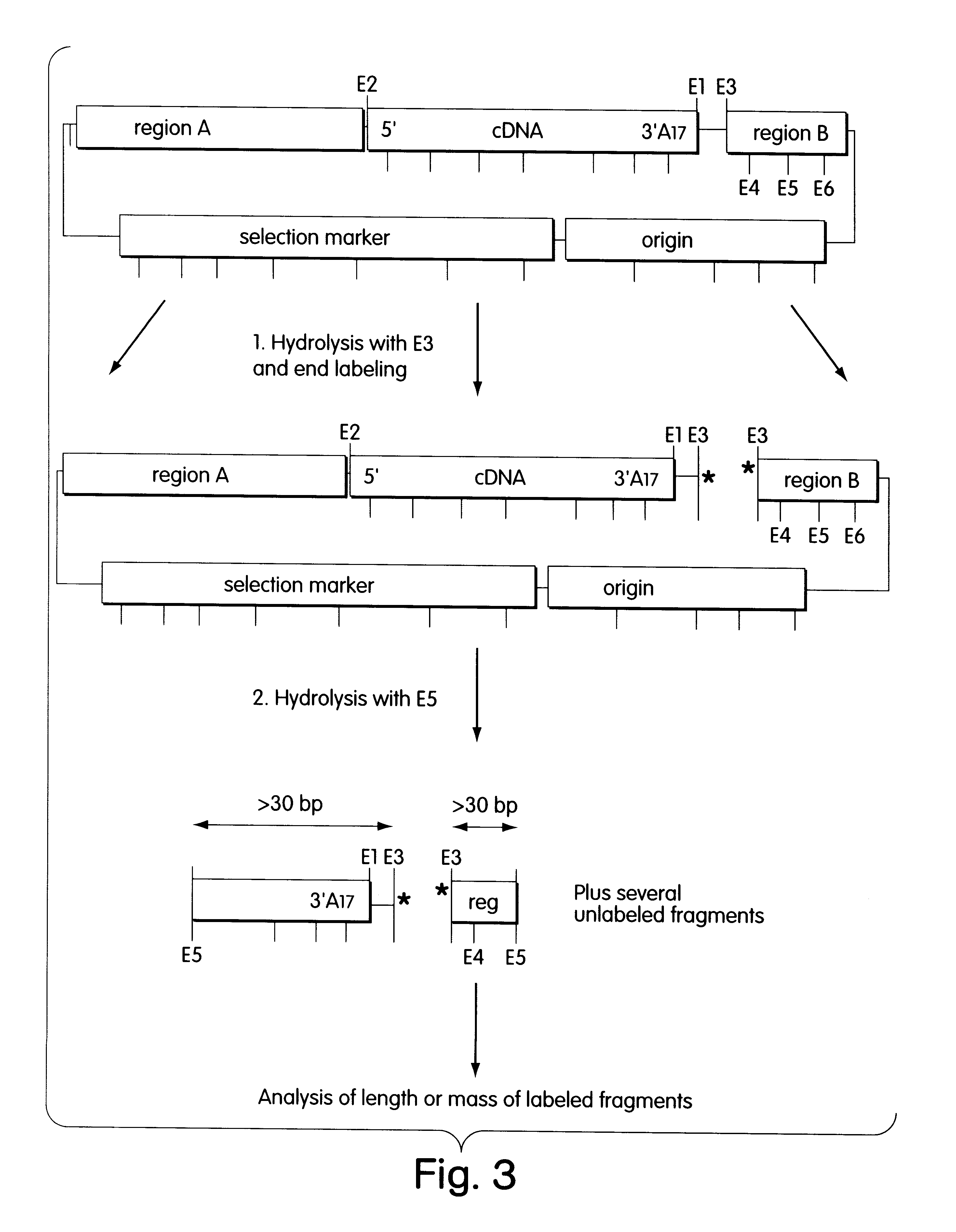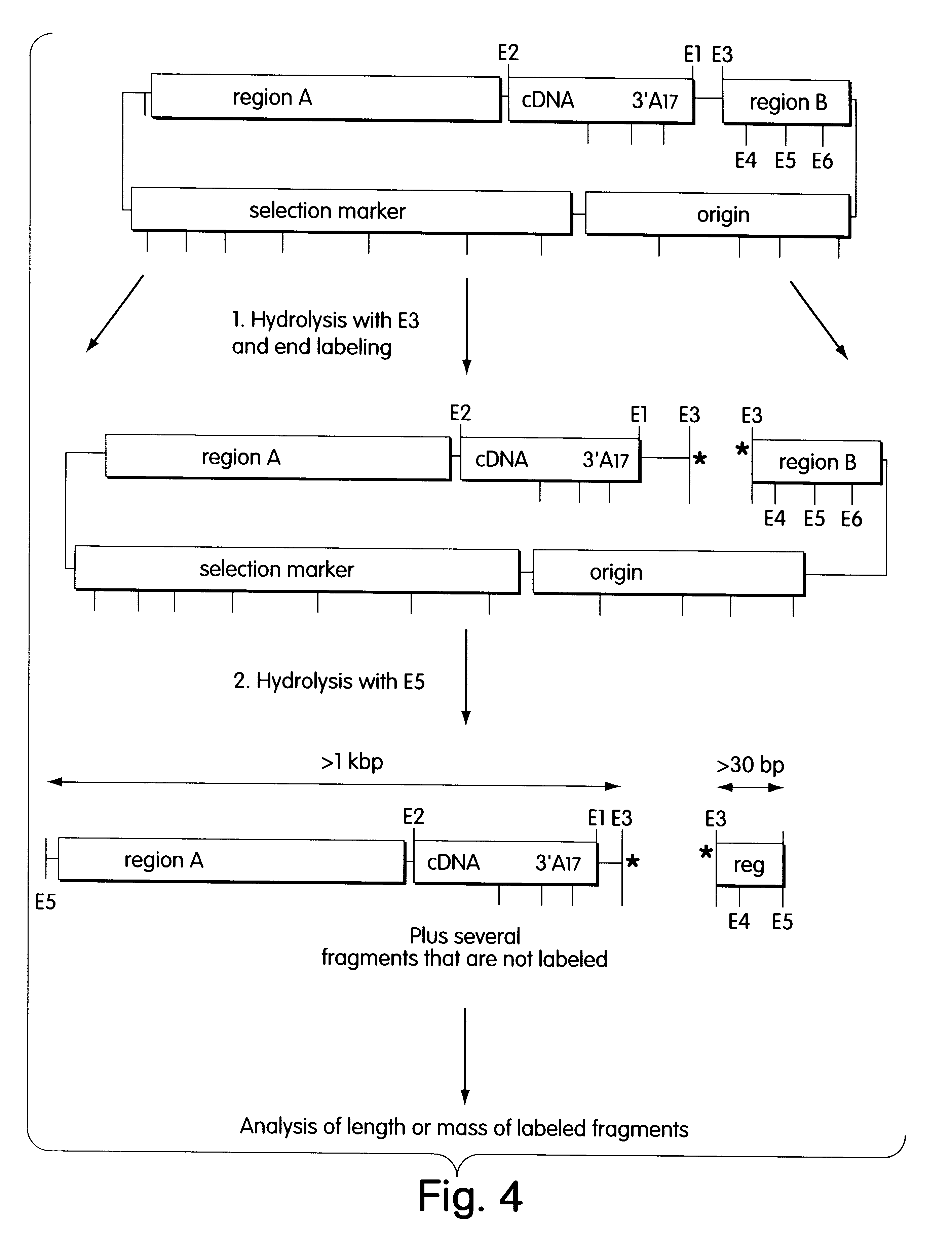Cloning vectors and their preparation and use for mRNA expression pattern analysis
a technology of expression pattern analysis and cloning vectors, applied in the field of cloning vectors, to achieve the effect of cost-effective and high-throughput analysis
- Summary
- Abstract
- Description
- Claims
- Application Information
AI Technical Summary
Benefits of technology
Problems solved by technology
Method used
Image
Examples
example 1
Description of the Vectors
A vector according to the invention was constructed by standard cloning methods (supra) as follows.
The vector pUC19 was cut with AatII and HindIII, and the fragment which is 2170 bp in size and contains the .beta.-lactamase gene (ampicillin resistance) and the ColE1 origin of replication was isolated. The following double-stranded synthetic oligonucleotide was inserted between the AatII and HindIII cleavage sites (SEQ ID NOS: 8, 9):
5'-AGCTTGGCGCGCCGAATTCTATCTCGAGCGGCCGCAGCTGAGATCGTACCCTATAGTGAGTCGTATTACGT- 3'
3'-ACCGCGCGGCTTAAGATAGAGCTCGCCGGCGTCGACTCTAGCATGGGATATCACTCAGCATAA-5'
This resulted in the following arrangement of recognition sequences and elements:
HindIII-AscI-EcoRI-XhoI-NotI-AluI-DdeI-DpnI-RsaI-T7 promoter.
Two different vectors were generated starting from this construct.
Vector 1
The DNA of bacteriophage .lambda. was cut with DdeI and DpnI, and the fragment 901 bp in size was isolated. The DNA was blunt-ended by treatment with Klenow polymerase. A d...
example 2
Preparation of a cDNA Library
The cDNA was synthesized using the "cDNA Synthesis Kit" (U.S. Pat. No. 5,681,726 Stratagene GmbH, Heidelberg, Germany #200401). The starting material comprised 5 .mu.g of mRNA. For this purpose, the 5 .mu.g of mRNA were denatured in 37.5 .mu.l of water at 67.degree. C. for 5 minutes, cooled on ice, and combined with 5 .mu.l of 10.times.first strand synthesis buffer, 3 .mu.l of methylated nucleotide mixture, 1 .mu.l of RNase inhibitor and 3 .mu.g of primer mixture. In place of the primer contained in the cDNA synthesis kit, a mixture of 12 primers was used (SEQ ID NO: 17):
5'-GAGAGAGAGAGAGAGAGAGAACTAGTCTCGAGTTTTTTTTTTTTTTTTVN-3'
The hybridization of the primer and the synthesis of the first strand took place after addition of 1.5 .mu.l of MMLV reverse transcriptase (50 U / .mu.l ) at 38.degree. C. for 1 hour. The reaction mixture was then cooled on ice and, after addition of 20 .mu.l of second strand synthesis buffer, 6 .mu.l of nucleotide mixture, 116 .mu.l ...
example 3
DNA Preparation. Hydrolysis, Labeling and Analysis of Clones
The cDNA library was plated out so that 55 to 75 colonies grew per selection plate (Petri dish with a diameter of 10 cm, LB agar medium with 100 .mu.g / ml ampicillin (Sambrook et al., 1989 supra). After incubation at 37.degree. C. for 24 hours, the colonies were rinsed off in 1 ml of TE buffer (10 mM Tris-HCl pH 8.0, 1 mM EDTA, pH 8.0) and pelleted in a microcentrifuge. The bacteria were disrupted by alkaline lysis, and the plasmid DNA was isolated by standard methods and taken up in 60 .mu.l of TE buffer.
The first hydrolysis with E3 (NotI) and the end-labeling took place in a coupled reaction. The labeling took place by ligating a double-stranded unphosphorylated oligonucleotide. The shorter oligonucleotide carried at its 5' end a dye (either FAM (5-carboxyfluorescein), TAMRA (N,N,N',N'-tetramethyl-6carboxyrhodamine), or JOE (2',7'-dimethoxy-4', 5'-dichloro-6-carboxyfluorescein). The longer oligonucleotide was complementary...
PUM
| Property | Measurement | Unit |
|---|---|---|
| Length | aaaaa | aaaaa |
Abstract
Description
Claims
Application Information
 Login to View More
Login to View More - R&D
- Intellectual Property
- Life Sciences
- Materials
- Tech Scout
- Unparalleled Data Quality
- Higher Quality Content
- 60% Fewer Hallucinations
Browse by: Latest US Patents, China's latest patents, Technical Efficacy Thesaurus, Application Domain, Technology Topic, Popular Technical Reports.
© 2025 PatSnap. All rights reserved.Legal|Privacy policy|Modern Slavery Act Transparency Statement|Sitemap|About US| Contact US: help@patsnap.com



